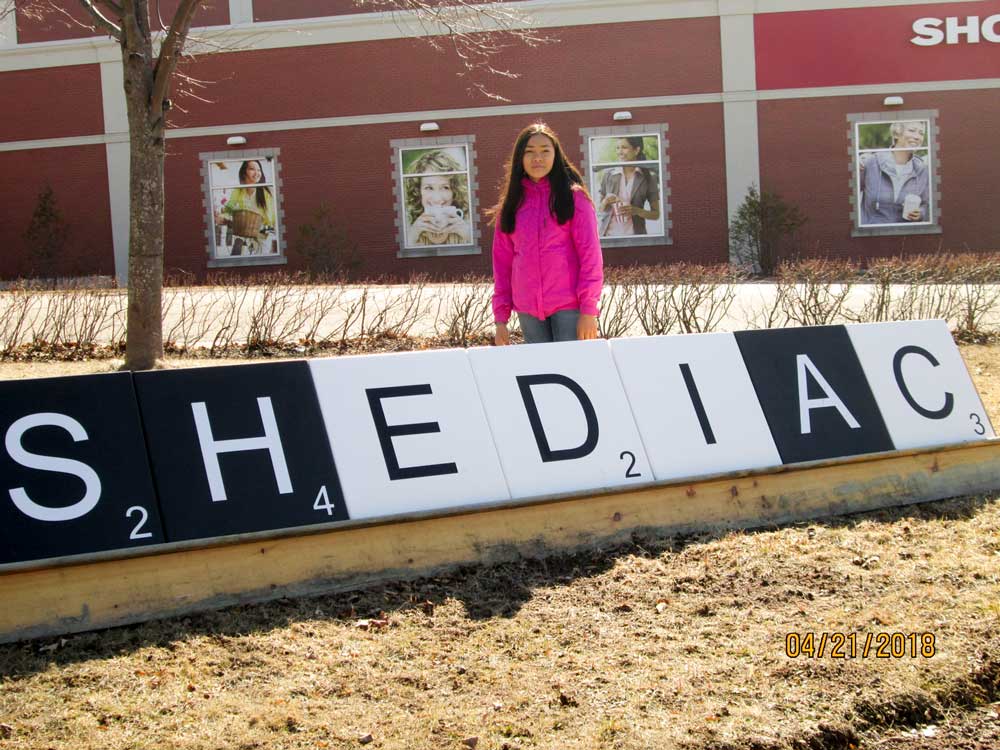SHEDIAC, NEW BRUNSWICK––Autumn Peltier is from beautiful Manitoulin Island in Georgian Bay. She has learned her people’s Indigenous wisdom and has brought inspiration from Ontario’s Unceded Wiikwemkong Territory to a southern New Brunswick town called Shediac. Autumn Peltier, a young Anishnaabe-Kwe, has become a well-known advocate for safe drinking water and for clean waterways in Canada. This was her first visit to Atlantic Canada and now as she does her water work, the world’s oceans are also in her sights.
Autumn is bright, energetic, clear-eyed and hard-working. She is fearless and she is only 13 years of age. Her grandmother called her the “little old-woman girl.” Perhaps because she speaks out bravely, confidently, passionately and she started doing so at eight years of age.
Autumn Peltier has been recognized by the Governor General and Ontario’s Lieutenant Governor. She was invited to address the United Nations General Assembly on World Water Day, March 22 of this year. And for a second year in a row she is Canada’s nominee for the International Children’s Peace Prize to be delivered by a Nobel Laureate. She is athletic, a strong academic, a leader in her community and a positive role model for youth.
While in Shediac opening an environmental conference as keynote speaker (April 23, 2018), she also visited a local high school. There she engaged with Grade 11 and Grade 12 students. The following is an account of what she, the students and the teachers experienced:
The scene is set in small town New Brunswick and the room at LJR Regional High School in Shediac went silent. You could hear a SIM card drop. Students from Grades 11 and 12 listened intently to hear Autumn Peltier speak her truth…simply and with integrity. She intuitively understands the teachings of her culture, having learned from many, and especially from a celebrated elder in her community (her Auntie Josephine), her mother and her grandfather. She speaks their truth: protect and respect the Earthʼs elements, they ensure your survival.
She had spoken truth to the Assembly of First Nations with a pan-Canadian audience. She also spoke her truth to Justin Trudeau, expressing her sorrow that her words may go unheeded. She worries about follow through. So she says we can’t just pray anymore. She has done long water walks, protested, marched, blocked a highway.
But she is a 13-year-old girl who cares a lot about her friends, being raised by a fiercely independent and brave mother. Now her water work needs to allow her to experience being 13, as well. So in the conference room at LJR over 40 students and three teachers had gathered to hear her speak and view her presentation containing photos of water walks, her family members, Aunt Josephine and the activism she has participated in. During this session, her mother Stephanie was very active.
Questions followed: What is a water walk, who is your inspiration, what was it like to fly across the Atlantic to go to this big meeting in Sweden, can we reach you through social media? Then Stephanie grabbed some audio speakers she saw in the room. Very quickly she set up a YouTube of Autumn making her speech to the chiefs of the Assembly of First Nations after her return from Sweden. In it Autumn sings a ceremonial water song. Halfway through, her tears overflow and she weeps. But she goes on. She is determined to finish the song.
The chiefs standing behind her on the stage approach to lay their hands on her shoulders. This steadies her and she completes her singing. The students say nothing for a few seconds, then the room erupts in applause. Stephanie tells me this happens every time but Autumn’s feelings were real, not rehearsed. One student asks, “Why did you come here from Georgian Bay? When you have been to New York, Sweden, British Columbia, Minnesota, why our small town? Pointing to me, Stephanie answers “that lady just doesnʼt give up.”
My editorial comment: we made her an offer she could not refuse. Touching the salt water, breathing in the ocean air, making an offer to the Creator in the form of tobacco and a berry floating out on the high tide, praying for our water. Stephanie made this a special moment for Autumn and me too. My favourite moment was watching Autumn do cartwheels on the sand dune. Yes, in this busy family’s life, Autumn has taken gymnastics.
Why Autumn? One of our members knew of her, in fact many had seen the media information of her speeches to the prime minister and the Assembly of First Nations. We knew she would kindle our hopes and inspire us to think of the issues in terms of a basic principle: holding water as sacred and not accepting the incessant push to develop the shoreline for human habitation, infilling wetlands, ignoring rising sea levels and predicted flooding patterns. We were open to inviting Autumn because she would bring a different perspective, she is a voice from away, yet her culture and traditions were exactly what we needed to stay the course. We found her to be inspiring.
Another privileged moment was watching Autumn run far out onto the tidal flats at low tide, far from her mom and me. Skirting ice flows sitting on the sand, as she ran and skipped around. But always looking down to find shells or crabs, whatever she could see on the sand. She chose a bleached clam shell which would be a souvenir of her visit here. Both mother and daughter told me that the people here were really nice. They would like to return to this part of the world one day. We did want very much to make our guests feel welcome and appreciated.
Final comments go to the LJR itself, where a committee of students many months ago had planned an awareness event to bring attention to the plight of our Canadian communities living without safe drinking water. Many Indigenous communities have been living for years now with boil water advisories, a daily routine we in this community take for granted. So to raise awareness, the students at this high school organized a ‘water march’ which took place at their school on April 26.
The fall election could be a catalyst for this and other types of awareness events, to invite and actively engage young people in our communities. Shediac Bay is now the focus of contamination issues along the coastline. The health of people living and visiting here, as well as the health of all local businesses is at stake. More summers with “no swimming” warning signs on our beaches will inevitably translate into more jobs being lost in the local tourist industry. Young people will lose opportunities to transition toward part time and summer jobs. And businesses will lose part of their livelihoods or worse, face closures.
No one wants this, and no one is in favour of water pollution. There has never been a better time to become involved. Young people in Shediac are becoming more aware of the declining health of the coastal wetlands, the rising sea levels and the need to find solutions to the water contamination issues. Someone once said that the youth are the future and that they will inherit the earth. In fact, it’s already theirs and we are just the caretakers.




